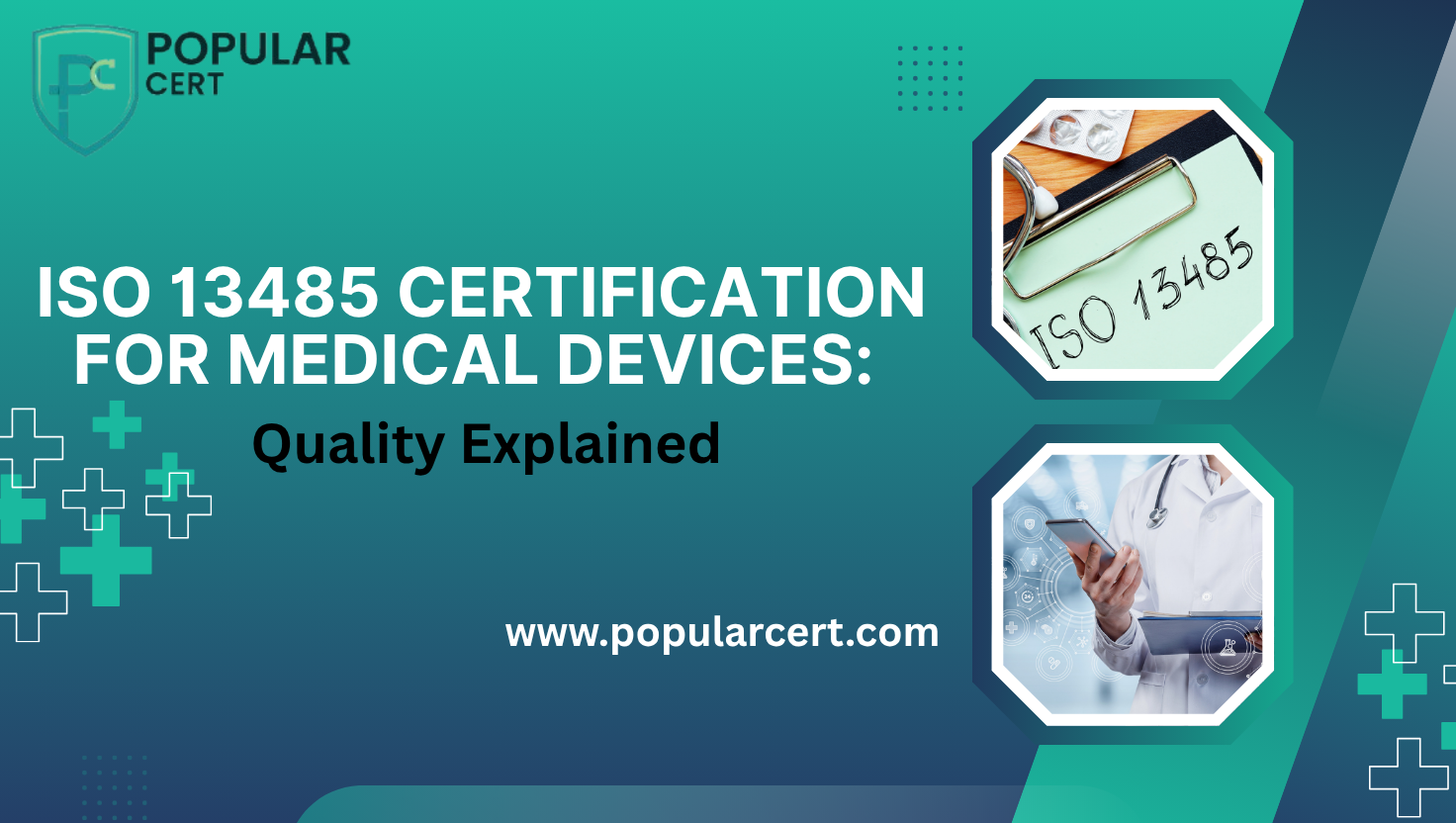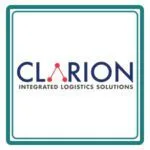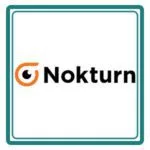ISO 13485 Certification for Medical Devices: Quality Explained

Introduction: Why Quality in Medical Devices Is Non-Negotiable
In healthcare, people depend on each tool-and life itself rides on its reliability. Every device that diagnoses, treats, or checks a patient must comply with tough, agreed-upon rules. A tiny slip in design or assembly can injure patients, trigger costly fines, and ruin a brand’s good name.
That is where ISO 13485 comes in-an accepted global rule book that tells medical firms how to build and prove a solid Quality Management System (QMS). Whether you are a small team testing a smartwatch prototype or a giant factory making surgical robots, having the ISO 13485 badge opens doors to regulated markets, earns customer trust, and helps you outrun the competition.What Is ISO 13485?
ISO 13485 lays out what a company must do and document to show it can deliver safe, effective medical devices and supportive services while meeting both buyer needs and mandatory laws.
Though it springs from the broader ISO 9001 model, this standard drills deeper into medical risks, product life cycles, and the special controls that protect patients at every stage.
Originally created by the International Organization for Standardization, ISO 13485 has become the go-to standard for proving that a medical-device firm keeps up with the worlds toughest rules, such as:
- European Medical Device Regulation (EU MDR)
- U.S. Food and Drug Administration (FDA) QSR
- MDSAP (Medical Device Single Audit Program)
Who Needs ISO 13485 Certification?
ISO 13485 matters for any group that:
- Designs and develops new medical devices
- Makes implants, instruments, disposables, or equipment
- Sterilizes, calibrates, or tests finished products
- Creates software for digital health or SaMD
- Handles distribution, servicing, or support after sale
- Packs products, manages logistics, or supplies key parts
Even if you never touch the final device, your customers will ask for ISO 13485 proof so they can trace every link and cut regulatory headaches.
Core Requirements of ISO 13485
Types Of Certification
- ISO Certification
- ISO 9001 Certification
- ISO 14001 Certification
- ISO 45001 Certification
- ISO 22000 Certification
- ISO 27001 Certification
- ISO 17025 Certification
- ISO 13485 Certification
- ISO 20000-1 Certification
- ISO 22301 Certification
- ISO 50001 Certification
- ISO 37001 Certification
- IATF 16949 Certification
- ISO 29001 Certification
- ISO 31000 Certification
- ISO 20121 Certification
- ISO 10002 Certification
- ISO 41001 Certification
Get Free Consultation
Our Clients


















1.Comprehensive Risk Management
Risks must be spotted, recorded, reduced, and checked again at every step-from the first sketch to the moment the product is retired. The standard weaves this risk mindset into every thread of the quality system.
2. Robust Design & Development Process
You need clear steps for:
- Collecting and reviewing design inputs and outputs
- Running verification and validation based on risk
- Seamlessly transferring the design to the shop floor
- Design change control and records
3. Process Control and Documentation
A solid quality system depends on keeping tight controls over:
- Clear standard operating procedures (SOPs)
- Clean-room controls, especially for sterile items
- Regular maintenance and calibration of all equipment
- Batch traceability and complete Device History Records (DHR)
5. Supply Chain & Vendor Management
Your suppliers and contract partners must play by the same rules. You stay accountable by qualifying, monitoring, and auditing them, then sealing the deal with quality agreements.
6. Customer Feedback, CAPA & Complaint Handling
Manufacturers are expected to run an open, responsive process that can:
- Collect and review customer feedback
- Log and investigate any complaint
- Drive timely corrective and preventive actions (CAPA)
- Report adverse events to authorities where applicable
Benefits of ISO 13485 Certification
Global Market Entry
Thinking about selling in the EU, U.S., Australia, or Japan? ISO 13485 is often the first hurdle, especially as CE mark or MDSAP requests keep climbing.
Increased Trust & Brand Value
Hospitals, clinics, and purchasing teams prefer certified partners because it cuts their own exposure. Being ISO 13485 registered gives your name more clout, helping you land bids and hold on to long-term contracts.
Operational Efficiency
The structured process controls that come with ISO 13485 typically lead to:
Less waste
Fewer product failures
Fewer non-conformities and rework
Shorter time to market
Legal & Regulatory Alignment
Many governments fold ISO 13485 into their rules. Certification keeps you audit-ready for:
FDA checks (21 CFR Part 820)
European Notified Body reviews
Health Canada and TGA demands
ISO 13485 Certification Process - Step-by-Step
1. Initial Gap Analysis
Popularcert carries out a thorough look at your current setup and spots the gaps against ISO 13485.
2. QMS Design & Documentation
We help write:
- Quality manuals
- SOPs
- Work instructions
- Risk management files
- Forms and checklists
3. QMS Implementation
The system rolls out across teams with clear roles, solid training, and ongoing support.
4. Internal Audit & CAPA
You carry out an in-house audit, flag any gaps, and fix them. Management then reviews the findings before pushing forward.
5. Certification Audit
Stage 1 Audit: The team checks your paperwork and confirms you are ready.
Stage 2 Audit: Auditors tour your facility, test processes, and collect evidence.
6. Ongoing Surveillance
Each year during the three-year cycle, the cert body returns for a brief check to confirm nothing has slipped.
ISO 13485 vs ISO 9001: A Quick Comparison
Feature | ISO 9001 (General QMS) | ISO 13485 (Medical Devices) |
Industry Focus | All industries | Medical devices only |
Risk Management | Recommended | Mandatory throughout |
Product Lifecycle Controls | Basic | Strict, regulated |
Design Documentation | General | Very specific and detailed |
Regulatory Alignment | Low | High – aligns with global laws |
Market Requirement | Optional | Often mandatory for approvals |
Each year during the three-year cycle, the cert body returns for a brief check to confirm nothing has slipped.
Why Choose Popularcert for ISO 13485 Certification?
At Popularcert we know every medical-device maker has its own story, whether it is a fledgling start-up or a sprawling multinational. That is why our ISO 13485 consultancy is quick, budget-friendly and rock-solid compliant.
What We Offer:
- Tailored Gap Analysis
- Process & Document Design (QMS manual, SOPs, risk files)
- Internal Auditor Training
- Audit Support & Mock Inspections
- Post-certification Surveillance Assistance
Why Clients Prefer Popularcert:
- Industry-specific consultants (surgical, diagnostics, wearable tech, etc.)
- Fast-track services for urgent CE/FDA deadlines
- Local and international certification bodies supported
- End-to-end engagement-from strategy to surveillance
Whether you need certification in India, the UAE, Egypt, Saudi Arabia, or anywhere in Europe, just pick up the phone and call us.
Real-World Example: Popularcert in Action
Case Study: MedTech Startup in India
A wearable ECG startup in India joined forces with Popularcert to secure ISO 13485 and CE mark approvals. In less than four months we crafted a tidy quality system, trained the team, and walked them through the audit.
They received the certificates and launched their monitors in Germany and the UK.
Case Study: Manufacturer in UAE
A UAE maker of medical disposables chasing government bids needed ISO 13485 in a hurry. With Popularcerts ready templates and on-site coaching they passed the audit on first attempt and became an approved supplier to hospitals across the Gulf.
Final Thoughts: Quality Is the Foundation of Trust
Today, having a clever gadget is nice, but proof that it is safe, legal, and dependable matters even more.
ISO 13485 gives you that proof.
It is not just a piece of paper; it tells regulators, investors, hospitals, and patients alike that you play by the rules, watch over quality, and follow the world’s best practices every day.
Earn your ISO 13485 badge with peace of mind-let Popularcert guide you.
Whether you’re aiming for CE marking, FDA clearance, or simply want to reassure customers, we’ll walk you through a quality management system that really works.
Contact Poplarcert now for a no-cost chat and begin the journey.
GET A FREE CONSULTATION NOW
FAQs
Is ISO 13485 mandatory?
Yes, in most places the standard is your passport to being allowed on the regulatory playground, particularly in the EU, Canada, Australia, and Japan.
What is the validity of the certification?
The certificate lasts for three years, but you’re not off the hook: yearly surveillance audits come round to confirm you are still doing what you promised.
Can small companies or startups get certified?
Absolutely. Popularcert loves guiding busy SMEs and first-time medtech firms through ISO 13485 with minimal fuss and maximum support.
How much does ISO 13485 certification cost?
Costs vary with company size, process tangle, and project scope, so drop Popularcert a request for a no-obligation quote and simple road-map.
Does ISO 13485 cover software devices?
Yes, the standard embraces Software as a Medical Device (SaMD) and embedded code alike-both of which are popping up everywhere in modern health tech.
